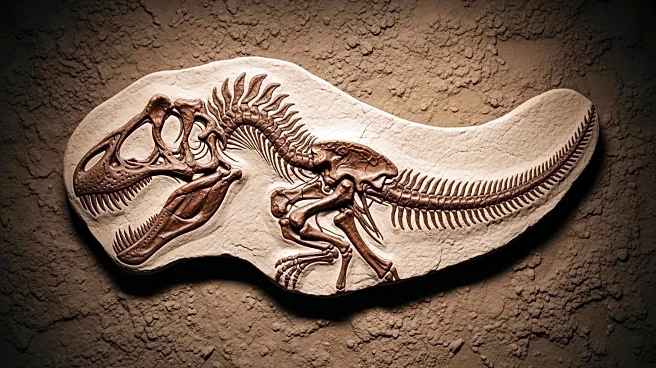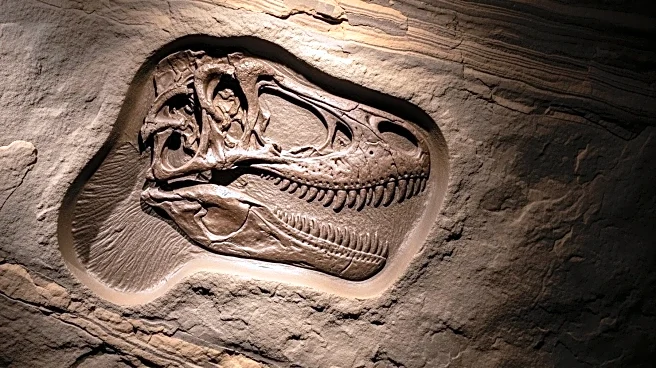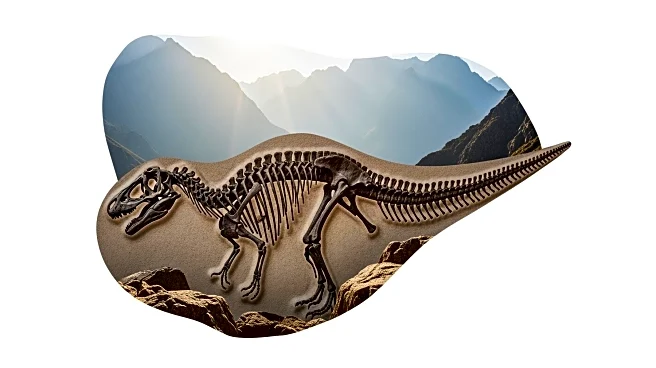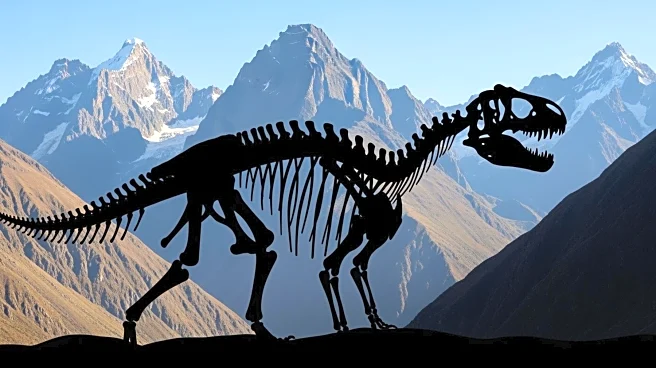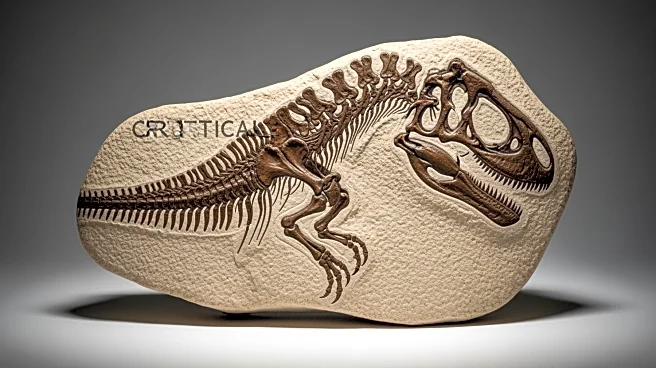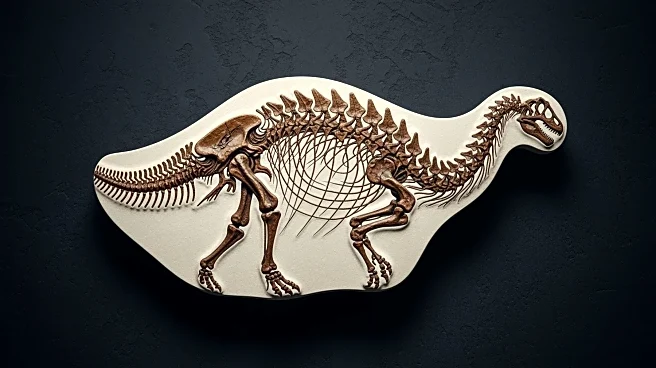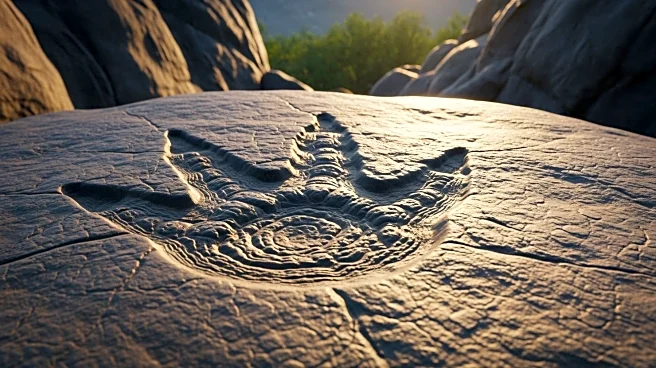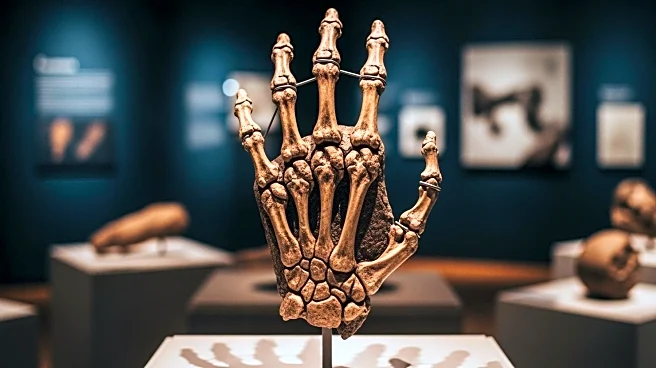What's Happening?
A team of paleontologists has discovered a fossil in the Argentinian Andes that challenges previous beliefs about the evolution of sauropod dinosaurs. The fossil, named Huayracursor jaguensis, dates back
to the Triassic period, approximately 230 million years ago. This discovery suggests that the development of long necks in sauropods began much earlier than previously thought. The fossil is a partial skeleton of a small dinosaur, measuring around 2 meters in length and weighing about 18 kilograms. Until now, it was believed that sauropodomorphs, the precursors to long-necked sauropods, were small, short-necked, and possibly omnivorous. The discovery of Huayracursor jaguensis indicates that increased body size and neck lengthening were evident from the beginning of the evolutionary history of its lineage.
Why It's Important?
This discovery is significant as it alters the understanding of sauropod evolution, suggesting that the traits associated with these dinosaurs developed much earlier than previously believed. The implications of this finding extend to the broader field of paleontology, offering new insights into the evolutionary processes that led to the emergence of some of the largest animals to have ever lived. By understanding the early development of sauropods, scientists can better comprehend the evolutionary pressures and environmental factors that influenced their growth and adaptation over millions of years.
What's Next?
Further research and analysis of the Huayracursor jaguensis fossil will likely continue, with paleontologists examining the implications of this discovery on the broader sauropod lineage. This may involve comparative studies with other sauropodomorph fossils to refine the timeline of sauropod evolution. Additionally, the discovery may prompt new expeditions to the Argentinian Andes and other regions to uncover more fossils that could provide additional insights into the early stages of dinosaur evolution.
Beyond the Headlines
The discovery of Huayracursor jaguensis highlights the importance of continued exploration and excavation in regions that have historically yielded significant paleontological finds. It underscores the potential for new discoveries to challenge established scientific theories and contribute to a more nuanced understanding of evolutionary history. The ethical considerations of fossil excavation, including the preservation of sites and collaboration with local communities, remain crucial in advancing scientific knowledge while respecting cultural heritage.
